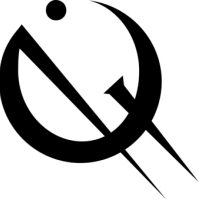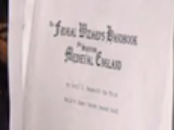Search the Community
Showing results for tags 'theory'.
-
I've been entertaining the idea that Chanarach is not Shallan's mother. Chanarach is Shallan's father. Feel free to poke holes in that theory. Here's the breakdown: We know the Heralds’ madness is tied to their heraldic attributes being twisted in some way. Chana’s attributes are “Brave” and “Obedient.” Lin Davar is a paranoid man, controlling to the point he’s obsessed with being obeyed and enters a blind rage whenever someone defies him. Heralds (and other highly Invested entities) have been shown repeatedly to be more resitant to physical damage. When Shallan kills her father, she uses the blackbane her brother Wikim gave her years ago. Blackbane is stated several times and by different characters to become more potent over time. Yet, when Shallan poisons her father, not only does it not kill him and only paralyzes him, he actually begins to recover from it, which is what prompts her to strangle him instead. And when she strangles him, she uses her necklace, which for Brandon felt the need to specify on-screen was made of aluminum. I feel like this is probably relevant. Do we know for certain Chanarach is a woman? We have the portraits, which we know aren’t accurate, and that’s about it. People who know Chana (Hoid, other Heralds, Shards and spren), never refer to her as a “she”. The Stormfather doesn’t contradict Gavilar when he does, but that doesn’t mean anything, given that we know the Stormfather can lie by omission. And even if she actually is a woman, we don’t know the process used to give the Heralds a body when they return. Something could have gone wrong. We don’t know which Herald dies the night of Gavilar’s assassination. We do know that there were several of them in the palace that night, and that Szeth was on a killing spree at the time. In fact, the unknown Herald’s death happened only moments before Sadeas came to warn Gavilar.
- 20 replies
-
7
-
- chanarach
- prologue stormlight 5
-
(and 1 more)
Tagged with:
-
Another theory here, so I was wondering if it would be possible for there to be a anti-version of investiture, shards, and Adonalsium. We see anti-light in RoW and its effect on normal light and invested beings, being capable of killing Heralds, Fused, and Radiant spren. This aligns with anti-matter in real life where, if it comes into contact with its opposite (like oxygen and anti-oxygen) it explodes in a massive explosion. This symmetry might suggest that there could be an ultimate foe in the form of some sort of anti-adonalsium which could be a reason that they need to bring the shards back together and reform adonalsium. What are your thoughts on this?
- 11 replies
-
- adonalsium
- shards
-
(and 1 more)
Tagged with:
-

theory Crackpot theory of what the unmade are
Secret Searcher Hyrum posted a topic in Stormlight Archive
I have probably my most hairbrained theory ever. And some background is required to understand where my mind went. Bare with me on this. The Unmade. We know that they were “made then unmade.” We also know that the color red *could* be indicative of “corrupted” investiture (investiture that has been “stolen” or “co-opted” by another shard). Most of the Unmade have an affinity to red. Odium: we know he has killed at least 4 shards (Dominion, Devotion, Ambition, and Honor {who is irrelevant for this theory}). Autonomy: she creates “Avatars” that are sentient, sapient, highly invested beings. All shards can do this (Most don’t want to as it seems to leave them temporarily exposed, maybe? Irrelevant). Theory: the Unmade were once parts (perhaps avatars) of Dominion, Devotion, and Ambition *before* they were Unmade. When Odium killed those shards, he Unmade these beings, corrupting them to be fully under his influence. You notice that a few of the Unmade are rather Ambitious. Whereas some are more Dominating. Even with some invoking Devotion from their prey. Please wreck this theory in the comments and replies, because I haven’t found anything to say that it most definitely is not this. -
Ok this one is a little crazy but here me out. A lot of importance has been placed has been place on Kaliden being called the son of honor/tanavast some have theorized that this means that he is the biological son or grandson of the vessel of honor but this make little sense unlike the Greek gods shards don't seem to have a body that can impregnate someone . They are much closer to the abrahamic form of divinity, however there is a abrahamic form of divine sonship. Now is there anything similar to the incarnation in the cosmere. Yes Avatars appear to function very similar to the biblical incarnation, How coincidental that we are first introduced to the concept of avatars in stormlight. Some other things to consider Kaliden is called storm blessed before he become a windrunner implying a pre syl connection to the highstorm. The storm father seems oddly interested in Kaliden, he rarely takes to humans other then Dalinar but has communicated several times to Kaliden. What do you think dose these make any sense even in a crazy sort of way.
- 21 replies
-
- son of tanavast
- kaliden
-
(and 3 more)
Tagged with:
-
So I started my relisten of the stormlight archive and I was once again thrown into the the amazing setting the shattered plains. So i just let thoughts of how this could have happen, and more importantly why it happened. so now I have a theory that I’ll present right now. its under the assumption that the shattering of the plains are caused by use of a dawnshard rather then the splintering of honor. I think that the shattered plains was caused by the knights radiants due to one of the silver kingdoms 1) going to war with them or 2) harboring the listeners hear me out. 1) constantly we hear in book one and two that the knights radiants “betrayed us” (after RoW I thought that it was because they betrayed the spren but it can’t be, sense most people didn’t understand/care for spren outside of the knights) 2) in book one there is an ancient passage where a king talks about traveling through the oathgates to talk to the Knights in alethela about the excessively high tax to use the gates. within this passage he talks about how they were starting to show their true nature. Showing that without the desolations the knights were falling into a more dominant kingdom and possibly self serving. 3) the recreance was a sudden stop that happened within a couple of days that’s as said caused a genocide Of 8 orders of spren. 4) the sibling was not bonded and the tower was locked by the knights 4b) it should be noted that the sibling lost the ability to hear honors tone and in so doing lost the ability to make tower light but was most likely still bonded as the sibling didn’t trust people but was still bonded to milishi who created the device to prevent anyone from accessing the main tower room. That used that’s right stormlight not towerlight 5) we know the recreance wasn’t because of the binding of BAM nor the enslavement of the singers due to this WoB https://wob.coppermind.net/events/374/#e12242 5b) as per the WoB we can assume that milishi was dead by the time the recreance happened and never broke his oaths. 5c) this also puts into perspective the battle at Firestone keep, they weren’t fighting singers. But humans 6) there is one radiant order that is still around that has division as one of its surges. so this is what I think happened. they trapped BAM and hurt the sibling making them unable to produce towerlight at the same time lobotomize the singers. They are probably relieved/horrified about what happened to their ancient enemy. They then can’t live in the tower due to it holding an unmade And no bondsmith so they make the most sane choice right? They lock the oathgates and basically fracture the economy across roshar. this of course causes outrage and different knights orders start fighting rather each other or united against the the rest of roshar It’s a slaughter and oaths are said in such a way to allow it to continue. (Ex I’ll protect the people of alethela against any threat) I believe that natanatan was the leader of the insurrection and in order to permanently stop the war a team of skybreakers went to the capital and used a dawnshard along with the surge division and destroy natanatans capital. after the other orders heard it they decided that the time of knights radiants was over and chose with their spren to end their oaths. Not realizing that they will kill their spren. The skybreakers keep to their oaths possibly uncaring( should be known that the 4th ideal is a crusade) or because they saw what happened to the spren. Now you might not be convinced completely but I have one last piece of evidence. It was in one of the visions honor tells Dalinar that odium knows that left by themselves that humans will destroy each other. I think that was the plan to let humans continue to fight with thousands of shardblades killing each other and basically being a desolation all by themselves. Reducing their technology so that the final desolation can come in and easily take over.
- 8 replies
-
2
-
- theory
- speclation
-
(and 1 more)
Tagged with:
-
So, I don't know if this has been thought of before, but I have had a theory for some time that we will eventually see more orders of the Knight Radiants-or at least sub-orders. Let me explain-we know that surgebinding is a result of Honor and Cultivation and that worlds with a invested shard have a magic system based at least partly off of the shard. Odium has now started investing himself more and more into Roshar and we've seen the effects in the Fused and voidbinding. Renarin, has bonded a spren corrupted by Odium and has manifested new variations (hence the sub-orders) on the original truthwatcher abilities. He is still a truthwatcher in that he accesses the same surges, he just manifests them in new and different ways. What are your guys's thoughts on this? Do you think that we could see sub-orders of the original Radiant orders?
- 7 replies
-
- stormlight archive
- roshar
-
(and 5 more)
Tagged with:
-
Alternate theory to cure Ishar/Stormlight 5 plot
CameronUluvara posted a topic in Stormlight Archive
So while I was writing my fanfic The King Is Dead, I ran into a couple of problems with moving off-world and thus a couple of questions. Roshar has big magic, and the more splintered the soul, the more full of magic it becomes. This is regulated by spren and ideals. Without a spren, the levels of magic could get nearly limitless if you have enough stormlight, right? Spren keep Rosharans from getting overpowered. This is often associated with the Honorblades; remember what Syl was saying about Szeth back in WoR? So the idea is, Ishar is so dangerous/powerful because he is a 'bondsmith unchained.' He has no spren, and now that Honor is dead, absolutely nothing is checking his power. Going into Stormlight 5, The Stormfather said that Ishar might regain a moment of sanity if a Radiant swore an Ideal in his presence because of the connection it creates with the Spiritual Realm, supposedly setting up a scenario where a Radiant swears an Ideal around Ishar. That's got to be misdirection--when does Brandon ever tell us what's going to happen and it actually happens? Alternatively, fix two problems with one Ideal...what if Ishar swears an Ideal and becomes a Radiant? It would heal his mind (probably? at least for a time) and more importantly get his powers back under control. Make him a bondsmith chained again. Being the Bondsmith herald, it makes the most sense for him to become the third Bondsmith. "No!" you say. "He's killed spren! No spren would ever bond him!" Well what in Damnation was RoW all about? The Sibling rejected Navani many times because of her enslavement of spren in fabriels. They worked it out. What if all that was a set up for this larger leap of Ishar bonding the Nightwatcher? (Perhaps Cultivation even sends the Nightwatcher to bond Ishar, thinking it will help him help Dalinar help Roshar.) After all, non-honorspren have very different ideals of morality than what we're used too. The ashspren, for example. This could also tie into the 'heralds joining their orders' thing that Nalan did. That storyline kind of went away/remained unexplained. That could have been setting precedent for heralds becoming Radiants. This all becomes even more poetic considering Ishar founded the orders and put a check on Radiant's powers in the first place. Recently someone was talking about how the terms of the contest of champions makes no sense for Odium, because he doesn't get much of a win either way. But Taravangian saw a possibility where he could win, and I'm sure he doesn't count that measly spoil as winning when's he's always set his sights on all of Roshar, and his ambition only grew when he took up the Shard. What stuck out to me is that he must stick to the contract because if he breaks his word, he exposes himself and Cultivation will be able to kill him. Seems to me in order to get what he wants, he has to break his word. The out is Cultivation not killing him. (remember, Honor is not an option here) Theory: Ishar bonds the Nightwatcher, and wily, ever-changing ole Ishar creates a Connection to Cultivation, sucks in all her power, and ascends to Cultivation. Then watches Taraodium break the contest of champions rules, and 1: madness, does nothing 2: struck a deal with Odium, does nothing 3: has own motives, such has wanting the planet to himself, does nothing, allows Odium to escape. Todium flees Roshar, enters as Trell on Scadrial, Cultivation/Ishar (Cultishar?) becomes the main villain for the back half of Stormlight. I'd love to be right but tell me how I'm wrong. -
Brandon has stated in the past that a Shard's intent is filtered through the vessel, and the vessel can have an effect on how the Shard's intent is portrayed. My idea is that Honor's broad intent, without the filtering by Tanavast is that it wants to form Connections. We can see this in Surgebinding (an art which, while being of both Honor and Cultivation, seems to be mostly Honor) is initiated by forming a Nahel bond. I also remember hearing somewhere (although I don't remember where) that because Honor violated the pact the Shards made not to settle on the same world, that they mustn't have been clearly defined well enough. This seems to imply that Honor at least follows oaths and Connections by nature of its intent. If this is true, then I think it is a reasonable assumption that Odium, without the filtering by Rayse, is about severing Connections. If these both apply then I think that the method of initiation to becoming a Voidbinder requires you to severe a Connection of somekind. We also know that Voidbinding is usually related to the Unmade, so you might be able to come up with a more detailed theory including that. Note, I do not think that you necessarily have to break Radiant Ideals or severe a Nahel bond to become a Voidbinder, just that it requires some Connection to be broken.
- 8 replies
-
2
-
- voidbinding
- theory
-
(and 2 more)
Tagged with:
-
Hi all! Thought I would run this one by you, What if the Ten Fools (three of which we have names for) are real, and what if they are creations of Whimsy? Although we really know nothing at all about the Shard Whimsy, I feel that this is right up their alley- Honor creates his ten Heralds, and Whimsy sees their opportunity to parody these solemn and epically heroic individuals. Whimsy creates their own ten highly invested cognitive shadows, each of whom bears a comedic flaw in contrast to the mighty attributes of the Heralds. I am in love with the idea of these ten immortal, super invested, interstellar jesters. Spreading Whimsy, but not being all that helpful to the grand scheme of things. My ambition is to someday put this theory to Brandon to get his views on whether this has any merit. In the meantime, I really wanted to share it with you all! Thanks gang, stay silly
- 9 replies
-
9
-
- rhythm of war
- cosmere
-
(and 8 more)
Tagged with:
-
There seem to be a lot of opposites in Secret Project 3. I think this hints at the nature of the two planets and their source of investiture (Virtuosity). TLDR: Similarities of opposites between the two worlds might suggest that a single world was created and then "bonded" in to two mirror type worlds by virtuosity during her shattering, which also created the hions, spirits and nightmares. Between worlds: Male/Female (yumi vs painter) Light and hot/Dark and cool (shroud vs star?*) Guilted into working too hard because no one else can do it /Shown to be only a replaceable cog in the machine (Liyun vs Sukishi) Revered Profession/Menial Labor (priestess vs janitor) Overachiever/Underachiever (37 spirits vs only bamboo paintings) Ritualistic/Secular Ancient/Modern (in terms of technology) Rural/Urban (at least in the areas we have seen) Nightmares Evaporate/Spirits split into opposites (cases of potential investiture usage being opposite to the world***) Underground/Below ground (spirits vs nightmares as sources of investiture) Torio: Fire and water. Liquid and light (As Yumi's description of bathing ritual) One vaguely male, one vaguely female (Difference between halves of bound spirit) Blue/Orange (as spirit colors**) Kilahito: Teal/Magenta (as hion colors**) * Sanderson has directly mentioned the shroud and that it causes the darkness, but had not really mentioned anything about the day star other than it is red-orange (which is cooler than the earth's sun) and closer than the listener's sun. If it is closer that might cause higher temps, but there are also references to water not being rare on Torio. Instead it is "concentrated, centralized, elevated". Maybe water in the atmosphere is causing the intense heat, like a clear version of the shroud. ** Sanderson has answered questions about the presence ( or lack ) of yellow (search yellow on words of sanderson on the coppermind) It is therefore notable that the color pairs would be opposite if they did not shy away from yellow. Blue should go to yellow but goes to orange. Magenta should go to green but goes to teal. *** So it water being dropped on the floor in Torio will evaporate. Similar to the description of the nightmare vanishing. (Instead, like water trapped on a hot plate, it just…evaporated.) Yet, when Yumi makes bonds with the spirits they split, like hions (twin bands of pure energy). Maybe banishing a nightmare creates a spirit and bonding a spirit creates hions? Two sides of the same coin. Want to dig into the golden rule/fib seq wrt art and virtuosity. Also the idea of the extent of world hopper influence and colonization.
-
I just joined the forums to post this theory. Aluminum is unique in that it is a metal that has magical properties on every planet and is not a god metal. my theory is that aluminum is in fact Adonalsium's God metal. my main reason for this is because it shows up on every planet and Adonalsium is the only one who would be able to have his godmetal on every planet. about aluminum's properties of repelling investiture, I think that this is because after the shattering his power would be kind of corrupted I guess and we have no other examples of a godmetal appearing after a shards death (I don't count shardblades since they have the spren's identity holding them). just wondered what you guys would think about this
-
Hey all. I recently started a reread of Stormlight Archive and decided I wanted to pay some more attention to the chapter headings this time. At the start of Chapter 3 "City of bells" there's the death rattle "A man stood on a cliffside and watched his homeland fall into dust. The waters surged beneath, so far beneath. And he heard a child crying. They were his own tears." and I had the thought that it would be a very Sanderson thing to do to have that city be Kharbranth given it's the chapter where it gets introduced. So I started thinking about what sorts of cool scenes could involve "a man" watching their Kharbranth crumble into dust. Now we know there's a very important character who has a very strong emotional connection to Kharbranth who is currently the vessel of Odium. You guessed it, the burden obsessed, murderous and calculating Taravangian. Now, one of Taravangians' first thoughts upon ascending was how he could save everyone in the cosmere. But we as readers also know in the long run that's a lost cause and he will inevitably give into his shardic intent and want to start destroying things. So how could Taravangian save the cosmere from a unleashed Odium? Well, he could trap himself on Roshar and do everything possible to throw away the key. Things like forcing the entire population to leave, destroying the landmasses, hurtling it into space, etc. Knowing Taravangian he would probably cry as he did that, but also knowing Taravangian he would also 100% do it if he thought it was the best path forward (which imo it very well might be). He very well might even start with Kharbranth. It's entirely possible that this outcome is exactly how Cultivation intended to deal with Odium and why she setup Taravangian to be the new vessel and trained him afterwards. Imo, the idea of Roshar being locked off from the rest of the cosmere in the future makes a decent chunk of sense as well. It could explain why we don't see investiture from Roshar saturating everywhere in what glimpses of the cosmere's future we have. I've also got some other thoughts in spoiler below Secret Project Spoilers Also, because I want to get it down before I forget. I have a sneaking suspicion we're gonna see some shuffling around as to who the antagonists are/the nature of the conflict for the back 5 will be. I could imagine trying to deal with a Taravangian losing the plot/convince them they're losing the plot and them going off into the cosmere to save everyone is a horrendous idea being a compelling plot (mixed in with other things of course). I could then imagine at least one other shard (either honour, Cultivation or both) not exactly being happy with the idea of sealing Odium on Roshar + throwing away the key and what that would entail. From there, protagonists could be working with an increasingly unreliable and destructive Todium who might even potentially flip back into antagonist mode at the end due to the shardic influence. I mean, how do you escalate from fighting one shard with the backing of another? Well you then fight 2 shards with the backing of another. How do you escalate from there? Well what if you made the one backing you incredibly unreliable and increasingly a detriment to your cause. How could you possibly escalate from that? Well you could just flat out fight 3 shards at once. Well, there you go. I hope you all enjoy my midnight crackpot theories!
- 5 replies
-
3
-
- row spoilers
- taravangian
-
(and 1 more)
Tagged with:
-

theory Some Notes on the Recreance [Discuss]
LewsTherinTelescope posted a topic in Cosmere Discussion
So, there has been a lot of debate about the Recreance recently. I feel there are a few specific things we can say are very likely, however, and I'm making this post to sum those up. TL;DR: The Recreance likely occurred on a single day — or at least during a very small time period — shortly after the imprisonment of Ba-Ado-Mishram, and during or soon after the abandonment of Urithiru, which had already begun to fail before said imprisonment. The Feverstone Keep vision is accurate: Mishram's capture happened immediately before the Recreance: Moat of the Knights abandoned their oaths on the same day: Urithiru was likely "failing" before Mishram's capture (though this is not certain): Tanavast's death was post-Recreance, but was a protracted event Confirmed by WoB[17] Either the enslavement of the broken singers didn't happen for decades, or the Recreance was decades apart from BAM's capture References: -
I didn't spot a specific mention of this, and it might even be a mistake, but it's interesting to me that Gavilar identifies the "sinuous, curved Blade" as belonging to Jezrien. This seems a little at odds with existing descriptions of Jezrien's blade ("thin, silvery weapon... an unornamented blade" WoR Ch 187) ("long, slender...largely unornamented" OB Ch 122), but more in line with the description of Ishar's blade (in RoW Ch 111) as, "a sinuous Shardblade lined with glyphs." Others noted that Gavilar doesn't seem to recognise Jezrien's blade when wielded by Szeth, which he ought to if he's seen the visions so many times. He also doesn't recognise Szeth using the powers of a windrunner, which I was also shown in the vision that featured midnight essence, IIRC. Furthermore, the SF reacts negatively (with a hiss) to Gavilar treating the blade cavalierly. Thinking about this led me down a rabbit-hole of what-ifs, but I think the above is fairly evidence based, while the rabbit-hole is a lot more guessy, and I'm interested to here what people think of the above.
-
So, like everyone else, I've been thinking non-stop about the Prologue since I heard it read the first time, like a good Vorin man. The ardent, Sando did a wonderful job. And I have some theories. Part of this is me purposefully trying to go against the grain since the prevailing Susfather Theory is that the Stormfather is not the Stormfather. So, I have an alternate solution: The Stormfather IS the Stormfather in the prologue and he Bonds with another between guiding Gavilar and Dalinar. Firstly: The Stormfather isn't tied to the storm at this point. This isn't something I've seen questioned before, but what if the Stormfather wasn't always Connected to the storm, but rather chose to be in it at certain times. Or just wasn't in it at all. Thus, the Stormfather was in a different form when he approached Gavilar, a form that allowed him greater flexibility. Secondly: The Herald Gavilar was going to replace wasn't Taln, it was Ishar. The Stormfather is trying to forge a new Oathpact, and to do that, he needs to have a powerful Bondsmith. In the Prologue, Gavilar assumes he is going to replace Taln, but that is based off the assumptions that all the other Heraldic buns are getting Braized currently. Thirdly: After the Night of the Prologue, the Stormfather, acting like a teenager that goes back to a toxic relationship because they can "fix them this time," approaches and Bonds Ishar in order to cure his madness (Spoiler, it doesn't, at least not fully). Ishar, being excited with all these returning powers, starts his experiments we see at the end of RoW. Spooky, scary Spren-etons, send shivers down your spine. Fourthly: Chaos. Arguments. Vases get throw at heads. Doors get slammed. The Stormfather breaks the bond (the mechanics are a bit sketch, but at the very least, I don't think Ishar would break it on purpose). In the process of the break, the Stormfather binds himself/is bound to the storm in order to hide himself from Ishar for the time being. Fifthly: at some point in the relationship, the Stormfather mentions the Shin with the Honorblade. After the bad break-up, Ishar needs a rebound, so he goes to the Shin and steals the Bondsmith Honorblade. at this point, I think its possible that Cultivation intervened and tells the Stormfather to bond Dalinar because plans, but I just wanted to theorize about what could be going on here. Would be a nice subplot for Dalinar and the Stormfather to retread as the 10 days go forward in SA 5. I do think that there would be some rewrites to the prologue needed to clarify this and direct the foreshadowing to this particular thing, but that is a given with all the theories about the prologue, I think.
- 2 replies
-
4
-
- theory
- stormfather
-
(and 1 more)
Tagged with:
-
Ok, hear me out. We know that Kelsier became a Cognitive shadow after his death because of Preservation. At the end of Mistborn: Secret History we see Kelsier wants to get back to life. We also know that the Ghostbloods want power. According to Mraize, they want Stormlight because it is easily transportable Investiture, and they will get rich off of it. That seems weak to me, because even though it would make them insanely rich, they already seem to be rich and there seem to be better ways than that. This is where my theory comes in. They want the Investiture so that they can turn themselves into cognitive shadows. We know that having a lot of Investiture can extend the time between dying and going to the Beyond. Any thoughts?
- 15 replies
-
- theory
- ghostbloods
-
(and 2 more)
Tagged with:
-
Hello, everyone! This is my first post here on the 17th Shard, so please excuse if I mark anything wrong on here. I do not know if this has been said anywhere else, but while listening to one of the Shardcast episodes theorizing about who would die in Stormlight book 5 and who would survive to make it to the back half, I had this thought come to me. It is a common theory that Kaladin will not make it to the back half of the Stormlight Archives since so much of the front half has centered around him, and so much of his character arc has already been completed. Thinking about how complete Kaladin's character arc feels made me realize how incomplete Moash's character arc has seemed to me. I do not know if anyone else has felt this way, but throughout all of the books it has felt like Moash should be an important character, but comes across more as a side character that sometimes is heavily involved with the plot. In theory, Moash's character and story arc seem really important and impactful, but I remember not feeling that way completely while reading the books, like I was waiting for more to be done with his character. In short, if Moash's charcter arc ended anywhere near where it is currently, I feel like I would be left with the impression that he was not used to his fullest extent. In addition, Kaladin cannot just die in book five. If he does, he needs to go out in a big and important way. He is too important of a character for anything else. This leads me to my theory. I am not sure to what extent spoilers need to be marked, so I am just going to mark the entire thing as a spoiler. Thoughts?
-
So, I don't really have any proof for this, but I was talking with a few other Sharders during school about how to shatter Shards and we came to this conclusion. Shards must be shattered by forcing them to act against their primary intent. It clearly doesn't work to just kill the vessel (examples of this is Mistborn and RoW), so there has to be another way to shatter the shard. Basically, the only thing that I think could truly break a power is forcing that power to do something it cannot. In this case, that is act against its primary intent. In the case of Honor, Odium probably managed to get Honor to break an oath. The Stormfather said that Honor got to the point at the end where he didn't care what the oath was about, as long as it was kept. Odium could have used this to force Honor into a Kaladin-in-Words-of-Radiance situation that forced Honor to break an oath. This would go against everything the power stood for, effectively destroying it. Like I said, I don't really have any proof, and I don't think that I did a great job explaining it, but hopefully it makes sense!
-
Initial train of thought Navani makes an interesting discovery in Rhythm of War: while Intention is needed to produce an anti-tone, the person playing it does NOT need Intent so long as the person creating the tool used to produce the sound had it when manufacturing it.[1] This Intent requirement brings to mind something else in the Cosmere – Hemalurgy. Hemalurgy requires Intent to create a spike, on the part of the stabber or someone else involved.[2] This got me wondering, can one create a metal with the Intention of it being used as a Hemalurgic spike, without the person using it knowing? And then I had another thought from there... Have we already seen this? Specifically, my mind went to the mystery of why Nightblood contains Ruin's Investiture.[3] An interesting thing with Hemalurgy is that it can be done by anyone with the right knowledge, no extra power required.[4] We also know that some of the Scholars had visited worlds that had gone through the Industrial Revolution and had a more developed sense of scientific theory.[7] Scadrial's tech level pre-TFE was apparently "early industrial era"[8], so it's possible that it was the place they saw, and perhaps they picked up knowledge of Hemalurgy, since it was known in Alendi's time.[9] (Note that I do not mean to say they visited pre-Ascension, just at a point where some things were still more widely-known in certain more Cosmere-aware circles than by Vin's time.) Now, we know that Nightblood was not originally a spike.[5] So I'm not suggesting that. But there's a key word there: originally. What if it's an object like what I speculate above, a piece of metal imbued with the Intent to rip off a piece of the soul of everything it attacks, but given a mind of its own and an incredible amount of Investiture to supercharge this effect and rip the whole damn thing out? (We know that larkin, Leechers, and Nightblood all work off roughly the same mechanics,[6] so whatever it's doing, sucking Investiture from the soul seems to be a key part.) That would explain how Ruin's power got in there, as well as explaining why it behaves very differently from anything else we've seen Awakened objects be able to do, and demonstrates a much more subtle yet terrifying way to mix various magics than something like Compounding. A small clarification Something I should note: Vasher has only been to the Physical Realms of Nalthis and Roshar, though he may have been to the Cognitives of others.[10] However, as the other WoB[7] says that some of the Scholars had been to worlds that had gone through the Industrial Revolution, and Roshar does not seem to have done so, and so I feel it's safe to say some of the other Scholars probably visited other planets, with Scadrial and Taldain in my opinion being the only real contenders for that one, and maybe Vasher just stayed in the Cognitive for that part of the field trip. And since Taldain is closed off[11]... Well, Scadrial certainly seems more likely to me. After all, as long as at least one learned about Hemalurgy, they could share it with the rest, and truthfully only Shashara really needs to have known exactly what was going on with Nightblood at the time. References
- 9 replies
-
7
-
- nightblood
- intent
-
(and 1 more)
Tagged with:
-
I’ve been thinking about the classification of Rosharan magic and its weirdness for quite some time and I believe I’ve finally come up with something useful. I think that all magic systems on Roshar could be understood using three simple rules: 1.We have a magic system (or at least a set of abilities) for each Light, which is typically used as the primary source of power for the magic 2. Full magic systems (i.e. having 10 powers) are only possible for Lights including Honor's Investiture 3. The classification is murky because of several reasons: the Light doesn’t need to match the magic’s Shards fully (e.g. original Surgebinding is of H+C, despite using primarily Stormlight) Shards and spren can copy the abilities of other magic systems (e.g. the Fused or Yelig-nar and Surgebinding) in certain situations the powers of one magic system can be fueled using different Lights (e.g. Venli using Voidlight to Surgebind) Surgebinding - Stormlight Not much to add here, Surgebinding (at least the original one) uses Stormlight primarily. The abilities of the Fused mimic it using Odium’s power. Old Magic and ancient Stoneshaping - Lifelight The Old Magic is of Cultivation, but there’s more to her magic and Lift’s abilities are apparently a hint: We also know from Venli’s chapters in RoW that the Dawnsingers used to have Stoneshaping abilities that didn’t require Nahel bond and were related to Cultivation’s pure Tone and certain Rhythm or Rhythms. Dawncities, cymatic patterns and maybe even what happened to the Shattered Plains are possibly related to this. Thunderclasts seem to be Odium’s corruption of these powers. Voidbinding – Voidlight (futuresight) and Warlight (ten Voidbindings) Voidbinding is extremely mysterious, but I think it could be understood by assuming that it is actually two magic systems: one purely of Odium (core, proper Voidbinding a.k.a. futuresight), the other of both Odium and Honor (ten Surge-like Voidbindings). Voidbinding is described a cousin of Old Magic and apparently its heart is trying to predict the future. Also, per Taravangian’s word, we know that all of the Unmade (primary source of Voidbinding) have futuresight abilities to some extent. This seems to indicate that seeing the future is not just one of the powers, but the core of the magic itself. The Voidbinding chart possibly hints at that by showing the center two “Orders” not connected to any powers. On the other hand, the Voidbinding chart also shows ten Surge-like abilities, organized just like in KR Surgebinding, which looks to me like a strong signal that Honor might be involved as well. Additionally, we know from RoW that corrupted Mistspren are of both Honor and Odium. I believe that Renarin’s Progression and Illumination abilities might actually be Voidbindings, different from baseline Surges by providing an access to the Spiritual Realm. The whole situation actually has a very nice parallel with the state of Allomancy after the recent atium retcon (Mistborn spoilers): One obvious problem is that Renarin is the first person bonded to a corrupted Mistspren: If that is the case, how is it possible that Voidbinding has been studied in the past enough to create the chart with ten abilities? I can see three possibilities: A. The chart has been predicted using futuresight B. Sja-anat has corrupted spren of other Orders before C. Voidbindigs have been observed before without any influence from Sja-anat, for example in Knights Radiant affected by some other Unmade Fabrials – Towerlight Navani describes the combined Rhythm of Honor and Cultivation as the Rhythm of science itself, so it makes sense that fabrials would be the magic associated with Towerlight. A recent WoB sheds some light on the history of Surge fabrial development: It seems that portable Surge fabrials (at the very least Progression fabrial from Dalinar’s vision and “universal” Soulcasters capable of any transformation) are a relatively late addition, essentially the KR co-opting fabrials to replicate their own powers. That gives us a lot of space to search for the esoteric abilities that Khriss mentions in Ars Arcanum. What could they be? I can see three interesting clues: Oathgates: they apparently predate other Surge fabrials and have been the inspiration for them. They have two spren and two powers: transporting to Shadesmar and to other Oathgates. The former is clearly a Surge, but could the latter be a separate power, possibly (Aether of Night spoilers) Aimia: Aimia used to have some impressive fabrial infrastructure and has been long associated with Soulcasters. Could these be Soulcasters capable of only one transformation? Do they have some additional secrets? I wonder what would happened if such Soulcaster was used with Towerlight – I hope Navani does such experiment in the next book Suppression fabrials: the corrupted suppression fabrial Lezian uses must have been an H+C spren once, right? It seems to indicate that the Sibling’s power protecting Urithiru can be replicated and given to people
-
Ok so what if it's really just the gods playing poker where they bet there power on the outcome of the world they govern and they nudge the humans along with power and other stuff like that. They're investing in the humans. Get it invest,investiture
-
- 2 replies
-
- non-cosmere
- wizard
-
(and 4 more)
Tagged with:
-
I posted a theory in the stormlight subreddit some weeks ago. I've discovered this forum since then and realized that it is a much more appropriate place for long theorizing. I'll therefore post the theory here too if that's ok. While reading the Navani/Raboniel chapters, I was shocked to see what sounded like a really good analogy to a fundamental concept in higher-level math and physics that usually does not get good popular-science explanations. I don't know if this was just a coincidence that I'm reading too much into or if someone in Brandon Sanderson's orbit learned the concept somewhere. Either way, I had to make an account to write about this. Field Theory: This section is going to be pop-science, so every detail is going to be a lie. However, the overall ideas and intuitions should be correct. Modern physics theories think of the universe as a made up of a bunch of things called fields. A field can be thought of as a bunch of abstract waves that permeate space. Physicists then apply some standard mathematical concepts for studying waves and eventually derive all the normal particles and laws that we hear about. To go further, let's discuss two intuitive and familiar versions of waves: light and sound. The first step when studying a wave it to break it up into a combination of basic, "pure waves" that, when combined in the right proportions, can make up any sound or color. For sound, these are the pure tones and for light, these are pure colors that a prism breaks it into. The list of pure waves depends only on particular symmetries that the field satisfies. For light and sound the pure waves are sine waves which behave very nicely when translated around (slightly more precisely for those who know, they satisfy the angle-addition formulas from high school trigonometry). Translation symmetry is important because that's the symmetry satisfied by the laws sound and light waves follow. The more complicated fields in physics satisfy more complicated symmetries. For example, rotational symmetry gives you "pure tones" that look like the electron orbital pictures you might see in chemistry class. Mathematicians call these generalized pure tones "irreducible representations". Just like breaking up sound into pure tones gives you the notes that make up everything sound-wise, breaking up the more complicated physics fields into irreducible representations give you the pieces of the universe that make up everything---all the fundamental particles: electrons, quarks, etc. While you don't need so many fancy words to just talk about the concept of decomposing into pure tones, field theory suggests that this is the fundamental idea needed to understand reality. The Fantasy Version: Investiture: In the real world, this analogy between sound/light and the physics fields that make up the universe is just that, nothing more than an analogy. However, something with Intent seems to make it much more than that with investiture in the Cosmere. Navani's chapters suggest that Investiture breaks up into different "pure tones" corresponding to different shards. Instead of just being complicated irreducible representations of the symmetries of some "investiture field", they also correspond to analogous and much more intuitive things: literal tones/rhythms or colors. Somehow, having the right Intent when creating the corresponding literal sound tone turns it into the correct tone of investiture. It lets you turn "base-state" investiture into investiture of the type you want. Because she was born on Roshar, Navani had been hearing the tones of Honor, Cultivation, and Odium her whole life and knew them almost from memory, so this was possible for her to do. Some Wild Speculation: Now, here's some wild theorizing if thinking about investiture in this way is actually correct. First, you should be able to use light instead of sound to imprint an investiture type onto base-state investiture. Light is another human-intuitive form of decomposing a wave into pure tones so it should work similarly if you have the right Intent. However, making pure colors is harder than pure sounds and might require a laser or something similar. Much more interestingly, you should not be restricted to tones you know from memory. In real physics, the "tones" correspond to irreducible representations of the symmetries of the field. If you know the symmetries, it's not too difficult for modern, Earth mathematics to enumerate and describe all the irreducible representations. It should therefore be possible for scholars on Roshar to mathematically derive all the rhythms, tones, and colors for all the other shards. In total, they would then be able to create, for example, devotion-light or ambition-light without having heard the tones for devotion or ambition before. Maybe Connecting(?) light to other shards in this way is the method for moving it off Roshar. As one possible path to this, the equations stormwardens use to predict highstorms should have something to do with Honor's "pure tone"/irreducible representation. As anyone who's worked with difficult equations knows, the best tricks for dealing with them involve finding hidden symmetries, so I think the stormwardens might already know some. These hidden symmetries would be the symmetries of the "investiture field". Some stormwarden might, just out of curiosity, decide to figure out which other equations satisfy these hidden symmetries and suddenly discover the patterns governing other shards. This same type of story has played out a lot in the history of real-world math. Finally, this might give some insight into how Adonalsium was shattered. A good analogy might be splitting light into its pure colors by sending it through a prism. I'm going to run into an issue here of having lied in the pop-science section, but in some sense (that's an even worse lie), light in a vacuum has some extra symmetries that make all frequencies the same. In a prism, this symmetry is ruined and different frequencies travel at different speeds, separating them out. Maybe Adonalsium was shattered in a similar way: put into some medium where some symmetry of investiture was broken and then refracted into all the shards. Why RoW is amazing science fiction This fundamental idea--breaking up waves into pure tones--is something that I really don't see that much in even popular science, no matter how important it is to actual physics. Imagine then my shock then when the first mass media I see it in is, of all things, an ostensibly fantasy novel. It's not just a side-note; it's a critical piece of the magic system that I can use above to build wild theories involving real science concepts. This is what science fiction should be: deep concepts and ideas, not just the superficial trappings of the genre, like robots and spaceships or whatever. It is the pure opposite of technobabble. I didn't even talk here about how Navani's chapters present a more accurate view of what it feels like to work on a science problem than anything I've read before. She sees some strange phenomena that confuse her: the voidsphere explosion and the Thaylen guild's fabrial methods. She thinks deeply about all the implications of what they must mean. She then puts together some simple ideas derived from those in complicated ways, experiments with them, and figures out something amazing. This is what science is at its most basic level.
-
So, like the tile says, at various times in SA, I'm pretty sure that Odium's forces are able to use the corrupted rhythms in a manner that is similar to emotional allomancy. They can't completely reprogram the way someone thinks, but they seem to be able to give a nudge in the desired direction. In particular, I think we see Ulim, Venli, and possibly a couple of stormspren use rhythms/vibration to manipulate others' emotions. I started down this line of thinking when I recently reread this Gavilar line from the OB prologue (Eshonai's POV): Given the juxtaposition of the words radiant and vibrant, and all of the stuff we learn about rhythms (i.e. vibrations) in RoW, I started to wonder if maybe the singers had at one point used vibrations in some kind of magical way. At the outset, I'll concede that the simplest explanation for Gavilar's saying that the singers are not longe "vibrant" is that he's just talking about the ones in slaveform. But indulge me. Looking back through WoR, OB, and RoW, I found a number of times where it seems pretty clear that either Ulim or Venli (or Ulim through Venli) use rhythms/vibrations to manipulate the emotions of others. Here's a rundown in chronological order. RoW Chapter 73 That's three times in relatively short order where we see this happen. Her mind growing fuzzy and circling back when she expresses concern about how manipulative Ulim is. Then Ulim's mocking laughter makes her gemheart vibrate. Note how Venli doesn't say that she "attuned" Agony, rather she felt herself attune it, almost like it wasn't her choice, but happened as a result of the ridiculing laughter. And lastly, she again starts to think that something is fishy with Ulim and he immediately starts with the obsequious puffery, accompanied by a rhythm, to cut off that line of thinking. RoW Chapter 77 Here we see Ulim vibrate energy through Venli while again peddling lies to get Venli on board with the plan to assassinate Gavilar. WoR Interlude 11 Here, just before the first highlighted passage, Eshonai is really angry about Venli not telling her that she knew stormform would change her. She's digging on on trying to figure out how Venli found out about stormform. She does not seem inclined to just let this go. But then Venli meets Eshonai's eyes, and hums to confidence while again repeating that they have to take this step, and Eshonai is just like, okay! and then proceeds to immediately do an endrun around the five and orders her stormform officers to round up any dissenters to be killed. In the second highlighted passage, Eshonai finally starts to have some doubts about what she's doing, and it seems like the stormform spren in her gemheart, mindless though it might be, senses her wavering and reacts, ramping up the new corrupted rhythms to push back. WoR Interlude 13 I'm not entirely sure what happens in the first part of this scene where Venli just smiles and goes along with Eshonai's position that they should wait. I imagine Ulim is saying something to her in her mind. Maybe pointing out that Eshonai is now the one manipulating her? Maybe congratulating Venli on making Eshonai think that the idea to wait was her own? I'm not sure, but there's something weird there. And then we get another instance of Eshonai poking into how Venli knows the things she knows and then something deep inside nudges her to move on. OB Interlude 3 I'm not entirely sure that in these two instances Demid is doing something similar to the other examples above. But Venli does seem rather agitated both times, yet quickly capitulates. I'll note that it's at the end of this Interlude when Timbre starts following Venli. Shortly thereafter she starts to be able to hear the old rhythms again, and as far as I can tell doesn't fall victim to this kind of emotional manipulation ever again. Bonus theory: all of this got me thinking that perhaps this is similar to what the ancient singers did, but not just with emotions. What if, rather than bonding with spren, the ancient singers were able to use the rhythms to communicate with the spren and ask them to manipulate the surges? The spren got some of those juicy thoughts and emotions they like so much through the rhythms, and got to manipulate things in the physical realm; the singers got to do cool magic that helped them out. Then the humans come along, all shiny and new, and the spren are like, whoa, now we can actually pass through into the physical realm more. And the singers are like WTF spren? ok, I guess we'll give this Odium guy a try.
-
Yeah, title. Personally, I do think there's a decent change that Lift becomes the Kaladin of the latter half of the series, with her as the arguable main character of books 6-10 the way that Kal has been for 1-4 (first book of the era both establishing the greater world at the current moment and also the past of the main viewpoint character, character deals with trauma related to their parents and deals with their own problems relating to doing violence for a good cause,) and we've seen her grow solidly through the present books, while also keeping her out of focus enough to prevent her from overplaying her hand in terms of history and things she has to work through. But as we've seen, she's already pretty far in her bond with Wyndle; Lift becomes a Third-Ideal Edgedancer as of, well, Edgedancer, and I'm not certain a Fourth and Fifth Ideal would be enough to deal with whatever craziness goes on in the latter half of the series. For this reason I believe Lift will bond the Nightwatcher (assuming that it is in fact a Bondsmith spren), as well as a few others. Firstly, there's the fact that Lift is a magical little goblin person. Lift is one of three characters we know of to have been gifted a boon by Cultivation directly rather then the Nightwatcher, and I personally believe her modifications are a bit more in depth then either Dalinar's or Taravangian's. Lift's spiritweb being modified to 1. run on Lifelight rather then Stormlight, 2. metabolize said Lifelight directly from caloric intake, and 3. exist a bit more in the cognitive realm (if i remember correctly) is to me a much more overt changes then Dalinar's temporary amnesia, and maybe even more overt then Taravangian's intelligence and passion. By modifying her spiritweb to run on Lifelight, it's possible that Cultivation is setting Lift up to deal with significantly more taxing abilities, such as the Connection-based powers of a Bondsmith. Lift also being an Edgedancer means she has one of the more simplified powersets of the Radiants IMO, so giving her access to four surges would be not too strong to be a main character, as neither Edgedancers nor Bondsmiths have been primarily combative in terms of abilities and instead forces Lift to continue using her intelligence and instincts in combat. (Also, having a living Shardblade already accounts for Bondsmiths so far not giving Blades.) The other important part of Lift's cultivation ties is looking, again, at Dalinar and Taravangian, more importantly looking at where they ended up due to Cultivation. Dalinar went from the Blackthorn, a man who treated the Geneva Conventions like a checklist, to the leader of the Radiants who sold a priceless weapon from an ancient time to free slaves, who is imperfect but trying, and who is one of two present Bondsmiths (and you could also make a pretty solid argument that him being in close proximity to Navani and helping her deal with her trauma due to Gav put her in a better position to be the other Bondsmith), and Taravangian, who's a frickin' Shard. Cultivation does not mess around, and that means Lift is definitely in for great things. "So," you say, "when would this happen? How do you see it going down?" Well, firstly, it's kind of rude to interrupt me while I'm writing, isn't it? But because I'm just that magnanimous, I'll tell you anyway. I see this bond being either the epilogue of book 5 (unlikely), first third of book 6, (maybe) or ending of book 6 (now we're cooking with oil!) I'll go through these in reverse order of likeliness. I doubt this'll happen at the end of book 5, because I imagine book 5 will be crammed tight already with Szeth and Kaladin vibing, the challenge, and everything else that I'm forgetting for the moment, and also because when this doesn't happen in book 5 I want a few years to hold out hope that my theorizing isn't wrong, dagnabbit. First third of book 6 I could see, but it would require a good amount of more obvious buildup in 5 and 6, and again, there's already approximately five billion irons in the fire for book 5. This bond occurring at the end of book 6 I really like, though, because buildup to a spren bond has generally taken a full book for a PoV character (Kaladin, Shallan, Dalinar, Navani, etc) so having the Sanderlanche of Book 6 include a Lift Bondsmith Bond would be enough time to establish dual spren bonds, etc; this also gives a character the ability to play with the Connection-based powers of a Bondsmith in combat more often, as Dalinar has been more of a logistics guy then a boots on the dirt combatant since gaining his Bondsmith bond, and I don't expect Navani to be jumping into combat soon but instead to explore the realmatic/scientific ramifications of Bondsmith powers instead. (Plus the whole can-the-sibling-bond-live-outside-urithuru thing.) Additionally, since there'll be a 10 year gap between books 5 and 6, I could see quite a few things going down. Dalinar either loses or ties the contest of champions and suffers a bad fate, removing him from the battlefield; and if Urithuru was destroyed/conquered again, that would serve to demoralize the Radiants and remove our second Bondsmith, giving the characters ample reason to seek out a combat-based Bondsmith to assist in the retaking of Roshar. This would give Lift, as a uniquely gifted individual in terms of Spiritweb, someone who already knows the location of the Nightwatcher, and theoretically one of the last remaining Radiants, significant motivation to be the one who directly seeks out Cultivation in order to see if she'll help them; and when she gets to where she met Cultivation as a young child, she's instead met with the Nightwatcher, who offers to bond Lift in addition to Wyndle, either on Cultivation's orders or just because Lift is that... Awesome. Anyway, hope you enjoyed the theory, been brewing on it for a while. Thank you for reading this, and have a lovely day. (Edit - Totally forgot that Lift has an Aviar now too. I don't think that factors into this theory, but it does give Lift a way to grow in book 5 without going up an Ideal, and if it has an ability like sensing other minds, could also help Lift find the Nightwatcher. )
- 13 replies
-
7
-
- bondsmith
- nightwatcher
-
(and 2 more)
Tagged with:










.thumb.jpeg.85e797372de047d06f847ec6b87c351a.jpeg)


